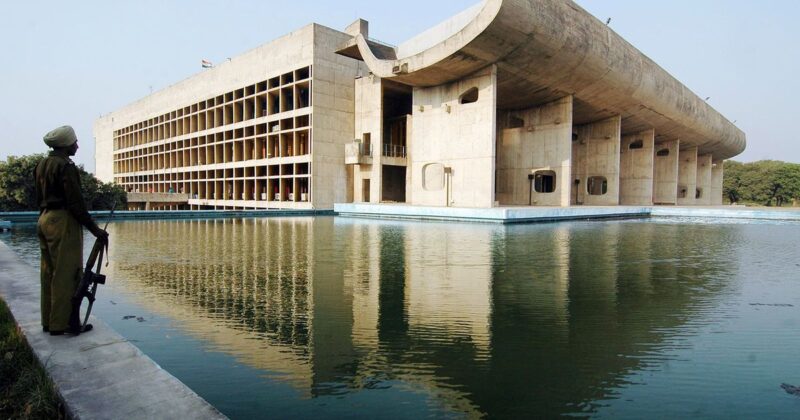We have been travelling around and doing business in the Sub-Continent since the 1980’s and have the best of friends, contacts and strong ties there. Whilst our main business has been to salvage important art & décor from famous mid-century ocean liners at the ship breakers we have always been on the lookout for all types of important antiques and artefacts, visiting all the of wallah’s and bazaars we could in the major towns and cities of India, Pakistan and Bangladesh.

In the early 2000’s we noticed, along with a few Parisian dealers, some the Corbusier/Jeanneret furniture from Chandigarh starting to come on to the market, we immediately realised the implications and significance and we have been buying, collecting and supplying the trade in the furniture and effects from there every year since.
Over the last 20 years we have built up a vast experience in all things Chandigarh, Le Corbusier and Pierre Jeanneret, and we have access to the best and most credible pieces, making us one of very few impeccable sources. We visit Chandigarh two to three times a year in order to select only the best original pieces whilst other dealers are importing ‘blind’ and falling foul of the many fakes on the market. In the last couple of years we are finding fewer and fewer good pieces and it will not be long before there is very little left apart from what is and will be retained in the museums there.
See our collection of Pierre Jeanneret designed Chandigarh furniture for sale here
How I stumbled across Chandigarh
The first time I visited Chandigarh happened by pure chance in 2002. I was taking a break from a huge salvage job at the shipbreakers and was on my way to meet some friends up in the Himalayas in order to unwind and cool down. The long trip was broken up with an overnight stay in Chandigarh. As we drove through the city limits, gazing out of the window of the bus, I was immediately struck by the ‘Sector’ signs, the tough concrete architecture and the regimented Manhattan-style grid pattern of the streets. It was like nothing I had seen in India before.
As I walked away from the bus station, before I had even stepped off the pavement, I’d discovered my first piece of distinctive Le Corbusier design, a sewer manhole cover that, to my amazement, had a map on it of the full layout of the city, the Capital Complex and Lake Sukhna cast into it. Using the manhole covers I was able to nav igate my way to the complex and lake via the beautiful parks and avenues becoming increasingly bewildered by the combination of modern vision architecture, that was slightly camouflaged by the overgrown trees and concrete decay, and the striking meticulous planning that had gone into the residential, recreational and business ‘Sectors’ that I strolled through. By the time I had reached the Government complex at the head of the city I was totally intrigued and picked up as much literature about the history of Chandigarh before having to leave the city. By the time I reached my friends I had read it all and had become smitten with all things Chandigarh, Corbusier & Jeanneret. Soon after returning home to the UK I flew over to Paris to visit some of his ‘Villas’ and on that trip I learnt of Corbusier’s love of ocean liners, their design, their functional layout and style, which gave me a lovely link between my interests, old and new. Something I was particularly pleased with learning was that Corbusier would spend a lot of time down in the 3rd class areas of the ship, where the minimalist features and fittings of the cabins, such as exposed conduits and no frills light fittings, carried as much charm as the elaborate and decadence of 1st Class, a realisation I had also experienced during my own fascination with ship design.
igate my way to the complex and lake via the beautiful parks and avenues becoming increasingly bewildered by the combination of modern vision architecture, that was slightly camouflaged by the overgrown trees and concrete decay, and the striking meticulous planning that had gone into the residential, recreational and business ‘Sectors’ that I strolled through. By the time I had reached the Government complex at the head of the city I was totally intrigued and picked up as much literature about the history of Chandigarh before having to leave the city. By the time I reached my friends I had read it all and had become smitten with all things Chandigarh, Corbusier & Jeanneret. Soon after returning home to the UK I flew over to Paris to visit some of his ‘Villas’ and on that trip I learnt of Corbusier’s love of ocean liners, their design, their functional layout and style, which gave me a lovely link between my interests, old and new. Something I was particularly pleased with learning was that Corbusier would spend a lot of time down in the 3rd class areas of the ship, where the minimalist features and fittings of the cabins, such as exposed conduits and no frills light fittings, carried as much charm as the elaborate and decadence of 1st Class, a realisation I had also experienced during my own fascination with ship design.
Brief History of Chandigarh the City
Chandigarh is a city that was conceived in 1947 when India gained independence and the Punjab became crudely partitioned by the British. This huge area, north of Delhi, needed a new capital city and the Indian Prime Minister recruited French-Swiss architect Le Corbusier to head an architectural team of his cousin Pierre Jeanneret and English couple Maxwell Fry and Jane Drew, to take over from American architect Albert Mayers original concepts after he had to leave the project, having tragically lost his architectural partner in an accident.
In terms of ‘Design’, the significance of the city and the treasures within it remained overlooked by most for over 60 years and

with Indian culture preferring to refurbish rather than renew, the city became a time-capsule of mid-century furniture. That was until the moment, where eventually, these original pieces of furniture and fittings started to fall into disrepair and began finding its way into the junk markets or worse, the firewood scrap heap. Iconic teak and cane Jeanneret chairs, tables and storage pieces were being replaced with plastic chairs and metal desks and cabinets.
Whilst Le Corbusier oversaw the ‘Master Plan’, it fell to his Pierre Jeanneret to design nigh on all of the furniture and fittings used in the administrative, educational and government buildings. Due to the high humidity and Hindus considering cattle as sacred, teak and rosewood was favoured over chrome and metal, and cane over leather.
The nonchalant simplicity of styles, reduced to the minimum, combined with these primitive materials, resulted in a strikingly beautiful aesthetic.
The making of the furniture fell to several different Indian workshops, which is why you will find small discrepancies in angles and thickness amongst the pieces.
It was at the point when the furniture started to fall into disrepair and find its way onto the market that a small band of French antiques dealers, spurred on by sky-rocketing mid-century appreciation and valuation, started to bring important effects & artefacts back to Europe for repair and resale. Immediately there was excitement and a demand for the pieces and that of course immediately caught our attention and we followed suit. Due to our relatively remote location in Devon we chose to trade and not retail the items supplying some the finest galleries and stores around the World for the following ten years.
Chandigarh Furniture Fakes
Due to the raw nature of the materials, the fact that original workshops slightly strayed from the blueprints and the high value of the furniture, it is relatively easy to fake and the fakers heavily incentivised.
The large majority of dealers selling the furniture have arrived very late on to the scene and have never been to Chandigarh, and they typically source the pieces via photographs and then import. We, on the other hand, travel to India three times a year and hand select each piece from source, based on our connections, relationships and 15 years experience.
Please view our gallery of sold items dating back to 2006, some of which were featured in the famous ‘discovery sales’ in the Paris auctions.
Certificate of Authenticity, Photographs of point of discovery and/or pre-restoration can be supplied.
See our collection of Pierre Jeanneret designed Chandigarh furniture for sale here
For more information regarding sales, the provenance or the market, please do contact Trinity Marine owner Mark Jameson
